Finding the perfect adhesive for your crafting can be tricky at times. For example, are you trying to glue fiberglass but can't seem to find a formula that works? What is the best glue type for this material? Can you use regular glue for fiberglass?
Well, we've done some searching and have the answer below!
Generally, the best glues for fiberglass are super glue and two-step epoxies. To properly bond fiberglass, you have to use glue formulas that dry fast and can adhere to plastic, as that's what fiberglass is mainly made from.
Furthermore, you want to ensure the adhesive product you use on fiberglass mentions it as one of the compatible surfaces, or you could make a mess and have to start over.
As we start this article, we'll discuss all things gluing fiberglass and cover what formulas you should use for your project. Whether you're repairing, attaching two pieces of fiberglass, or need extra help: we've got you covered. With that said, let's dive right into this topic!
Can I Use Glue On Fiberglass?
Yes! Using glue is a great option if you need to bond two or more pieces of fiberglass. Generally, most superglue formulas will work for fiberglass surfaces.

Moreover, two-component or two-step epoxies will also do the trick for fiberglass. That's because these formulas often bond quickly and securely to plastic surfaces.
Fiberglass is essentially fiber-reinforced plastic using glass fiber, hence why it has that name. Working with fiberglass can sometimes be tricky since it tends to leave you feeling itchy if it starts shedding.
That's why using fast-drying glue is so important. The less time you're messing around with fiberglass:, the better.
Many experts recommend first trying a two-step epoxy for your fiberglass project, as it offers a more permanent effect. That's because one part of the epoxy is a resin, giving your project a clear, moveable finish.
The second part is the hardeners, which trigger polymerization (the permanent dried effect).
Gorilla 2-Part Epoxy Set
This adhesive set comes with a resin and hardener, works on plastics, promises a permanent bond, has a syringe dispenser, works well for crafting and repairs, and sets in six minutes or less.
Follow this link to view it on Amazon.
Krazy Glue, Max Bond Gel
This super glue works on plastics, dries clear, won't run on surfaces, sets quickly, can withstand temperature changes, and comes in a 0.14-ounce bottle.
How Long Does Glue Take To Dry On Fiberglass?
![How long does glue take to dry on fiberglass, What's The Best Glue For Fiberglass? [Our Top Products Explored]](https://craftsbliss.com/wp-content/uploads/2023/01/How-long-does-glue-take-to-dry-on-fiberglass.png)
When it comes to how long you need to wait for fiberglass to dry, this depends on the glue formula. Generally, super glue or crazy glue products will set within ten or so minutes.
However, you still need to wait about 24 hours for a complete cure. The same goes for your epoxy: whether it's a two-step program or a single tube.
The glue takes about 24 hours to cure fully, meaning you can resume daily activities with your fiberglass after that timeframe. Even if your adhesive sets and feels dry to the touch, you need to allow it one or two days to settle permanently.
According to a sailboat owner forum, adhesive on their fiberglass typically takes 10-20 minutes to be dry enough to touch, so that's a brief timeline.
So, your fiberglass will likely share a similar dry time even if you aren't working on a boat. The best plan is to let your fiberglass dry in a cool, temperature-controlled space for 1-2 days and then return to using it.
How Can I Make My Glue Dry Faster?
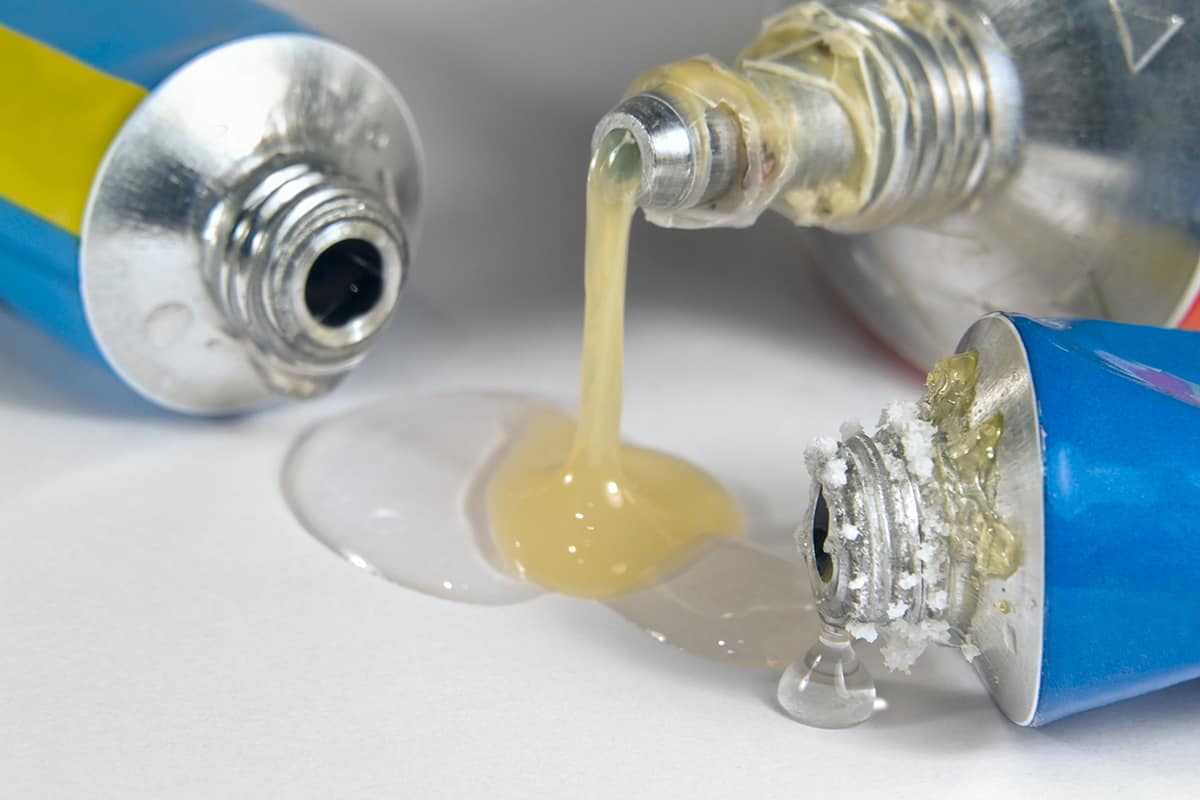
For those who want to speed up the glue dry time on fiberglass, this should be pretty easy. Typically, having a fan facing your project will help speed up the cure time.
In addition, many experts recommend using a blow dryer or a heat lamp to help speed up the glue-drying process. You can also keep your fiberglass project in a temperature-controlled room set around 70 degrees, which will get the ball rolling.
One misconception about glue drying is that super cold or super hot temperatures help: they don't. You want to try and use either warm, dry air or let your craft sit in room-temp/cool, dry conditions.
Moisture is the number one thing to avoid when drying adhesive. That's why, even on a warm day, you don't want to leave your fiberglass outdoors to dry if the humidity is too high.
Water in the air can slow your material's drying process, requiring even longer than 24 hours. Many DIYers choose the warm air route for setting their glue, so that seems to be the general favorite.
However, turning on a box fan and positioning it towards your craft may work just as well.
Do I Need To Sand Fiberglass Before Gluing?

You usually don't need to sand down fiberglass before applying glue. Especially when working with epoxy products, they are often fine to go immediately on fiberglass: prepped or not.
However, West System recommends using sandpaper on burnished fiberglass, so that's one example of needing to do this. When it comes to the sandpaper you need, we recommend 80-grit aluminum oxide sandpaper.
This will glide easily over your fiberglass surface. Since fiberglass is a hybrid of plastic and glass fibers, it can be difficult to work with. Therefore, a stronger sandpaper is what you want to go with for your project.
Fiberglass is usually pretty smooth, to begin with, so don't worry about making it perfect before applying epoxy or super glue.
Luckily, these formulas don't mind uneven or imperfect surfaces, so we recommend them. Considering that fiberglass can shed tiny shards of plastic/glass on your hands and other body parts, it's better to leave it be and get your glue on ASAP.
If you've ever read horror stories about fiberglass in the air, you'll thank us for that suggestion.
Can I Use Regular Glue On Fiberglass?
Depending on the glue formula, it might be possible to use regular products on fiberglass. Usually, an all-purpose glue should work on fiberglass as long as plastic is a recommended/listed surface.
However, one issue with normal glue is that it isn't usually permanent. Furthermore, regular glue products often take longer to cure than super glue or epoxy, which can be frustrating.
As we covered, you want to stick with two-step epoxies as your first choice for fiberglass. That's because the epoxy formula is better suited for fiberglass specifically.
The same goes for super or crazy glue products. Not only do they stick better to slippery or uneven materials, but they also dry faster.
If you use a regular glue like Elmer's, the chances of a long-term bond between your fiberglass pieces become slim. Therefore, if you can purchase a more plastic-friendly permanent adhesive, we recommend doing that instead.
You'll get a longer-lasting result, meaning less time and product wasted.
Does Gorilla Glue Work On Fiberglass?
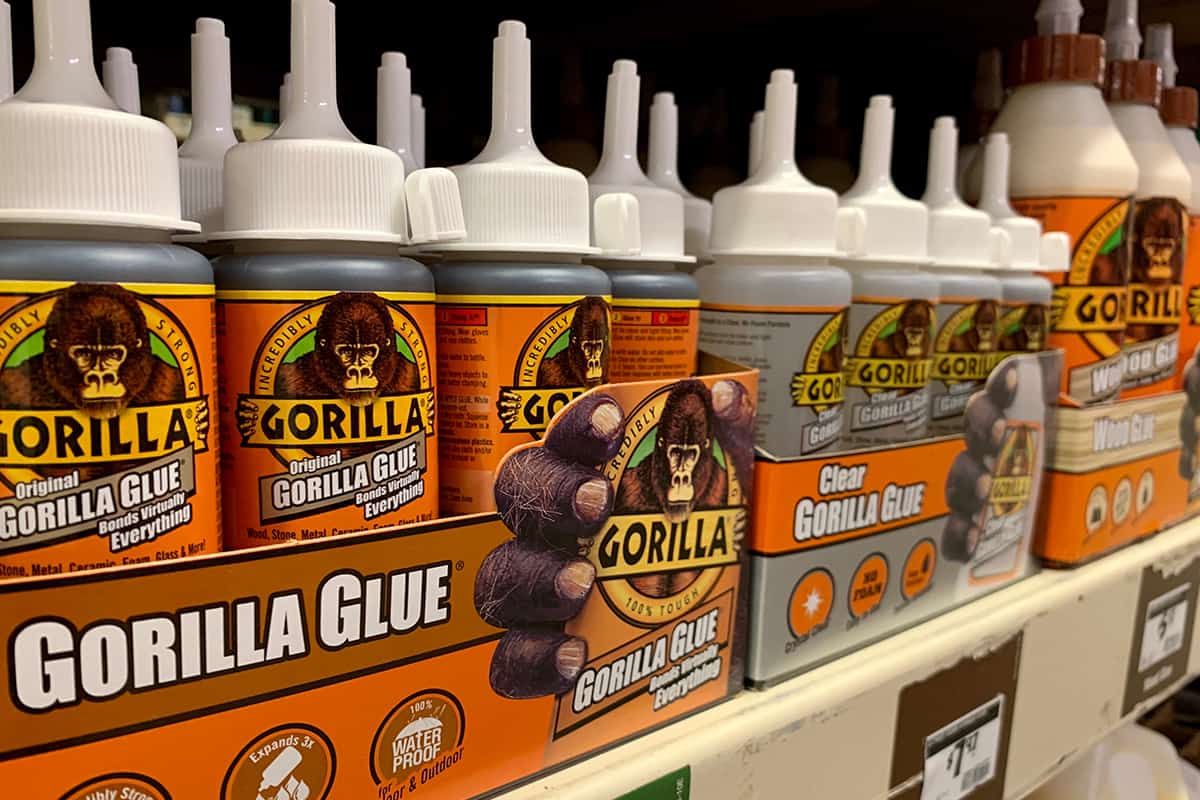
Yes! If you want to use a super glue brand like Gorilla for fiberglass, this should work fine. Generally, Gorilla products work on fiberglass, ensuring a permanent bond between it and other materials.
According to the company, one of the better adhesives they make for fiberglass is GorillaWeld. That formula has a 4250 PSI bond strength and sets in just 10 minutes which is impressive.
Gorilla glues, as a whole, seem to work on just about any surface, making them a great option. As we mentioned before, super glues are some of the top fiberglass choices, including Gorilla products.
So, even if you want to use one of their all-purpose products on your fiberglass, it should be fine. The key is finding the word plastic or fiberglass within the product's label.
If you read through the recommended adhesion materials and don't see plastic or fiberglass, the glue is likely not a great fit.
Gorilla Heavy Duty GorillaWeld
This two-step Gorilla glue has an epoxy formula, works on fiberglass, dries grey, sets in ten minutes, is waterproof once dry, forms a permanent bond, and comes in a few bundle options.
Follow this link to see it on Amazon.
Can I Use Tacky Glue On Fiberglass?
Tacky glue should be fine for fiberglass since it follows an epoxy formula. According to the brand's website, Tacky glue is compatible with rubber, plastic, glass, metal, fiberglass, and more.
That means if you use their all-purpose adhesives, they will bond to fiberglass. Tacky glue is a favorite among crafters and DIYers alike, so it serves many types of tasks.
Another benefit of Tacky glue products is that they dry clear, making your repair or craft look more inconspicuous. Tacky glue also dries pretty quickly, often setting in 15 or so minutes.
Therefore, we recommend it for your fiberglass project. The brand makes plenty of products, so try and find an all-purpose option or one that explicitly lists fiberglass as a compatible surface.
Remember, if it doesn't mention plastic or fiberglass, it won't likely work.
Aleene's All-Purpose Tacky Glue
This Tacky glue works on plastic surfaces, dries clear, can be easily cleaned with water, has a non-toxic formula, and comes in an eight-ounce container.
Follow this link to view it on Amazon.
To Wrap Up
Whether you need to repair fiberglass or want to use it for a craft project, it's always good to have glue ready. We found that you want to stick with a two-step epoxy or super glue for fiberglass surfaces.
These formulas work best for plastic/glass hybrids and dry quickly. Since fiberglass can shed tiny, sharp particles, it's best to work quickly and use fast-bonding glue.
Furthermore, you might even get away with using Gorilla or Tacky glue products if they're all-purpose, so you have a lot of wiggle room.
And while we have you, check out these articles!
Can You Use Hot Glue On Glass? [And How To]





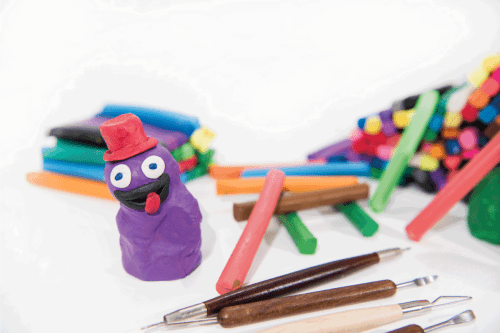
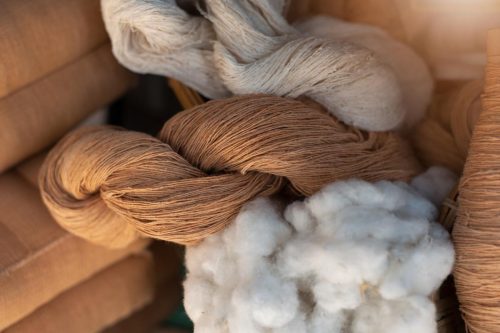
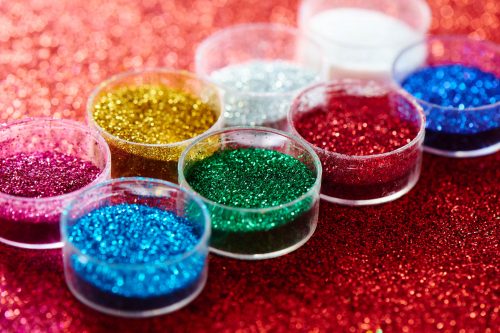


![Read more about the article How To Get A Smooth Paint Finish On Wood [A Complete Guide]](https://craftsbliss.com/wp-content/uploads/2021/09/Painting-timber-boards-outside-with-the-white-paint-500x333.jpg)